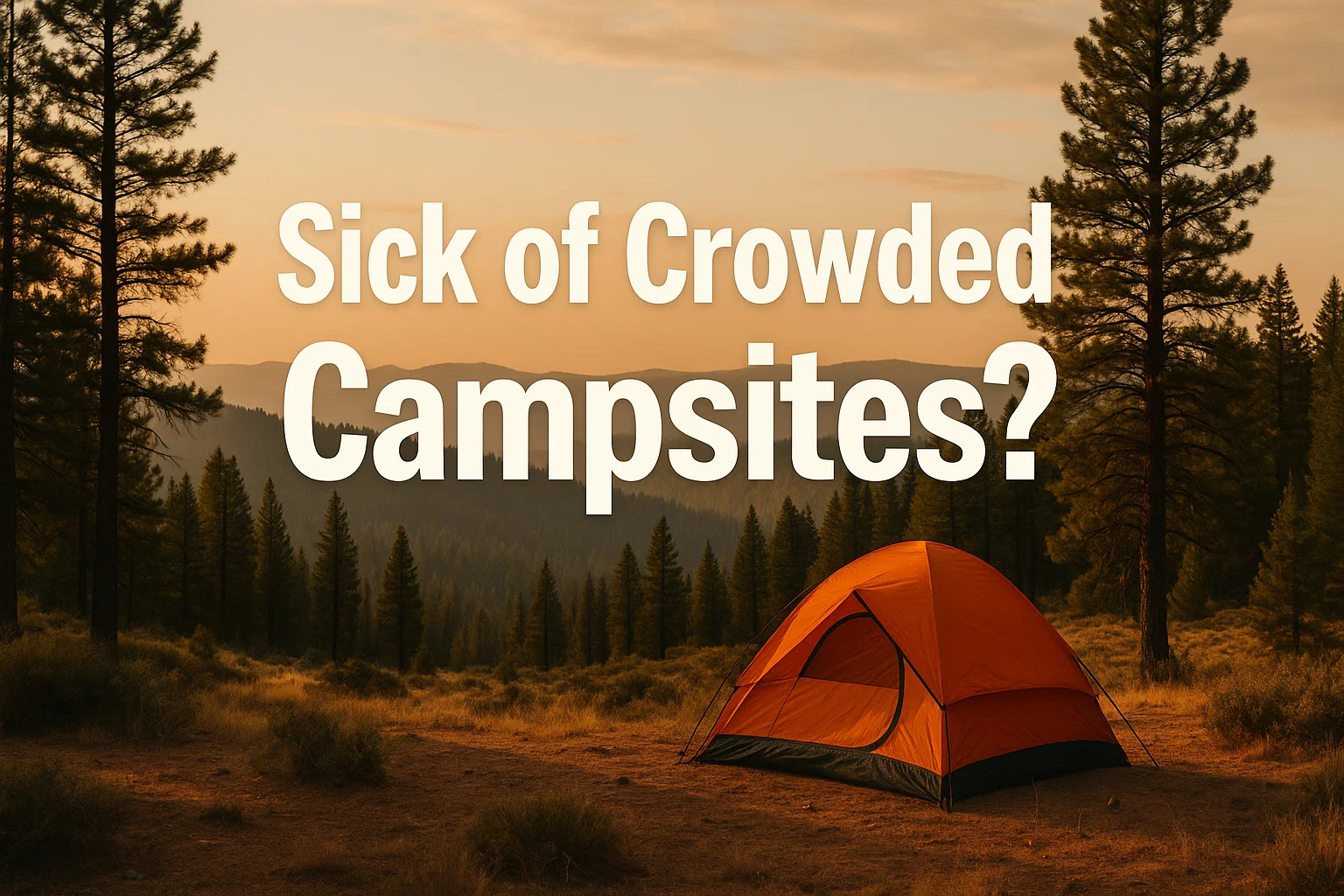There’s nothing worse than planning a peaceful camping getaway, only to find yourself surrounded by noisy crowds, jam-packed RVs, and campsites so close you can hear every neighbor’s conversation. If you’ve ever spent a restless night next to a group blasting music or a family running a generator at midnight, you know: crowded campsites can ruin the very magic you came for.
Fortunately, California’s wild beauty still holds secrets. You just need the right strategy to find the tucked-away places where solitude, starry skies, and nature’s pure silence still exist.
In this guide, we’ll break down exactly how to find hidden, secluded camping spots in California — even during peak seasons.
1. Stop Booking Popular Campgrounds (And What to Do Instead)
The Problem: If it’s famous, it’s full. Yosemite Valley, Big Sur, and Lake Tahoe sound great until you realize reservations sell out months in advance — and even then, you’ll share the space with hundreds of people.
The Solution: Focus on lesser-known areas or dispersed camping instead of reservable state park campgrounds.
Pro Tips:
- Search for National Forests and Bureau of Land Management (BLM) lands near famous spots. They’re often free, allow dispersed camping, and have fewer visitors.
- Try alternative parks: Instead of Yosemite, explore Sequoia National Forest; instead of Lake Tahoe, try Plumas National Forest.
- Avoid Google Maps — it shows popular places first. Use apps like iOverlander, FreeRoam, or The Dyrt to find less saturated options.
2. Use Dispersed Camping for Maximum Freedom
The Problem: Structured campgrounds pack dozens of sites side-by-side, leading to noise, lights, and no privacy.
The Solution: Dispersed camping means setting up wherever it’s allowed, usually with no neighbors in sight.
Where to Find It in California:
- Inyo National Forest — Massive stretches of free camping near the Eastern Sierra.
- Los Padres National Forest — Offers stunning coastal mountains and plenty of backroads.
- Six Rivers National Forest — Remote camping near giant redwoods without the crowds of touristy parks.
Key Rules for Dispersed Camping:
- Camp at least 200 feet from water sources.
- Follow “Leave No Trace” principles.
- Stay on existing roads and campsites.
3. Target Midweek Trips and Shoulder Seasons
The Problem: Even remote spots get slammed on weekends and holidays.
The Solution: Shift your camping trips to weekdays or shoulder seasons.
Ideal Timing:
- Mid-September to early November: Warm days, cool nights, and thinner crowds.
- Late April to early June: Before summer madness hits.
- Tuesday-Thursday departures: Most campers leave Sunday or Monday, so you’ll find emptier grounds midweek.
4. Choose Hike-In or Paddle-In Campsites
The Problem: Easy access attracts RVs, loud groups, and heavy traffic.
The Solution: Pick locations that require a little effort — it weeds out casual campers.
Best Hidden Gems in California:
- Point Reyes National Seashore (Coast Camp, Wildcat Camp): Short hikes in, stunning ocean views.
- Emerald Lake in Lassen National Park: Reachable by hiking, offers true alpine solitude.
- Tomales Bay: Kayak-in only campsites directly on the beach.
Bonus: You’ll enjoy incredible scenery that drive-in campers miss.
5. Look for Lesser-Known State Parks and Regional Parks
The Problem: Everyone knows about the major national parks. Lesser-known state parks stay blissfully quiet.
Hidden State Parks for Seclusion:
- Anza-Borrego Desert State Park: Vast desert landscapes, very few people.
- Ahjumawi Lava Springs State Park: Only reachable by boat!
- Henry W. Coe State Park: Largest state park in Northern California, tons of isolated camping options.
Local Tip: Regional and county parks (especially inland) often have incredible campgrounds few tourists ever hear about.
6. Learn to Read Topographic Maps
The Problem: Online reviews and popular apps lead everyone to the same few “secret” spots.
The Solution: Find your own.
How to Start:
- Use CalTopo.com or the Gaia GPS app.
- Look for roads marked “4WD,” “forest roads,” or “primitive access.”
- Find small lakes, rivers, or meadows off-trail.
It takes some practice, but nothing beats discovering a completely unmarked gem.
7. Prepare for Off-Grid Camping
The Problem: Secluded camping also means no amenities. No toilets, no water, no cell service.
The Solution: Pack smart and plan ahead.
Must-Have Gear:
- Water purification system (filters, tablets)
- Portable toilet or wag bags
- Paper maps and compass (don’t rely only on GPS)
- Backup food, batteries, and extra clothing
Pro Move: Bring an emergency satellite communicator like a Garmin InReach if you’re venturing truly deep.
8. Respect the Land (Or Lose Access Forever)
The Problem: Overcrowding and careless behavior have already shut down many previously free, beautiful camping areas.
The Solution: Camp respectfully.
Golden Rules:
- Pack out every scrap of trash.
- Camp on durable surfaces.
- Don’t build new fire rings (or skip campfires during fire season).
- Respect wildlife and stay quiet.
When you treat the land well, you help keep these rare secluded spots open for future adventurers.
Final Thoughts: You Deserve Peaceful, Private Camping
Crowded campsites don’t have to be your future. California is still full of hidden treasures — wild, silent, breathtaking places where you can reconnect with nature on your own terms.
It just takes a little extra effort, planning, and respect for the land.
Next time you pack your gear, remember: the best campsites aren’t found by clicking the first link on Google. They’re found by those willing to look deeper, go further, and camp smarter.
Happy trails and silent nights ahead!

